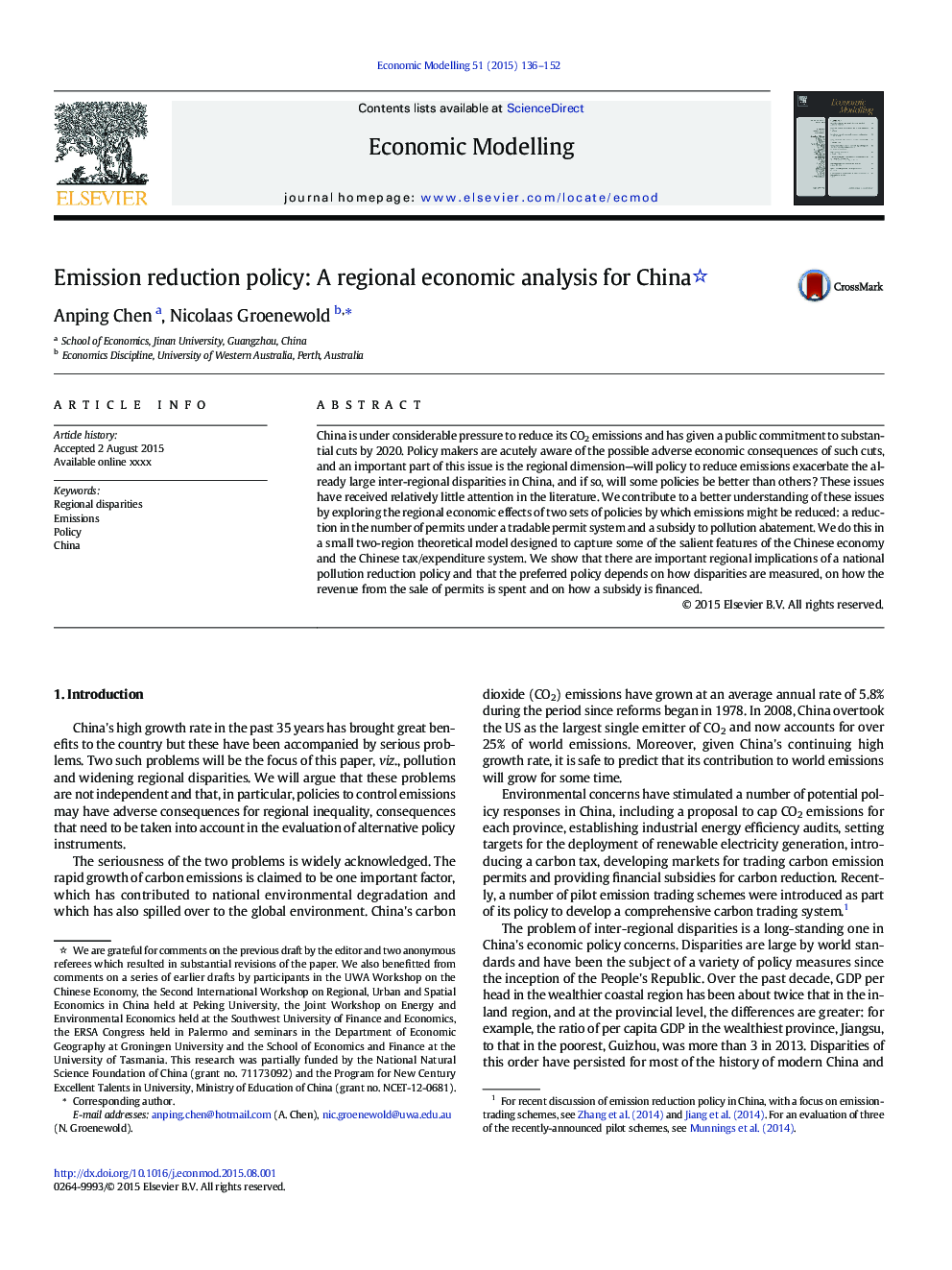| Article ID | Journal | Published Year | Pages | File Type |
|---|---|---|---|---|
| 5053712 | Economic Modelling | 2015 | 17 Pages |
Abstract
China is under considerable pressure to reduce its CO2 emissions and has given a public commitment to substantial cuts by 2020. Policy makers are acutely aware of the possible adverse economic consequences of such cuts, and an important part of this issue is the regional dimension-will policy to reduce emissions exacerbate the already large inter-regional disparities in China, and if so, will some policies be better than others? These issues have received relatively little attention in the literature. We contribute to a better understanding of these issues by exploring the regional economic effects of two sets of policies by which emissions might be reduced: a reduction in the number of permits under a tradable permit system and a subsidy to pollution abatement. We do this in a small two-region theoretical model designed to capture some of the salient features of the Chinese economy and the Chinese tax/expenditure system. We show that there are important regional implications of a national pollution reduction policy and that the preferred policy depends on how disparities are measured, on how the revenue from the sale of permits is spent and on how a subsidy is financed.
Related Topics
Social Sciences and Humanities
Economics, Econometrics and Finance
Economics and Econometrics
Authors
Anping Chen, Nicolaas Groenewold,
